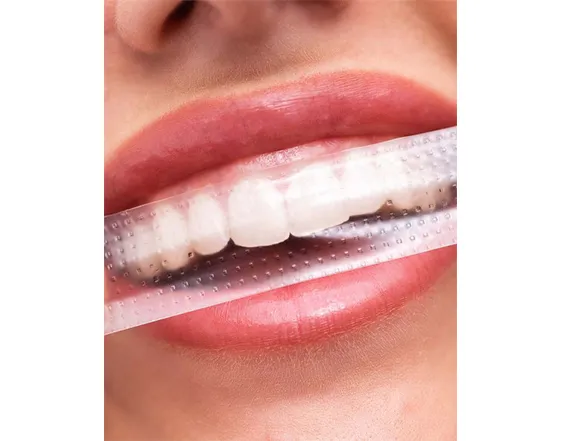Understanding Whitening Strips
Whitening strips have become a popular method for achieving a brighter smile. These thin, flexible strips are coated with a peroxide-based whitening agent, typically hydrogen peroxide or carbamide peroxide. They are designed to adhere to the teeth, providing a concentrated dose of the whitening ingredient directly to the enamel. The convenience and accessibility of whitening strips have made them a staple in many people’s oral care routines. But, understanding how these strips work and the factors influencing their safe use is crucial for achieving desired results without compromising oral health.
How Whitening Strips Work
The primary mechanism behind whitening strips is the oxidation of stain molecules within the tooth enamel. The peroxide in the strips penetrates the enamel, breaking down the organic molecules that cause discoloration. These stains can be caused by a variety of factors, including coffee, tea, red wine, and tobacco use. The whitening process essentially lifts these stains, making the teeth appear whiter. The effectiveness of the strips depends on the concentration of the peroxide, the duration of application, and the frequency of use. It’s important to note that whitening strips only work on natural teeth and are not effective on dental work such as crowns, fillings, and veneers.
The Science Behind Teeth Whitening
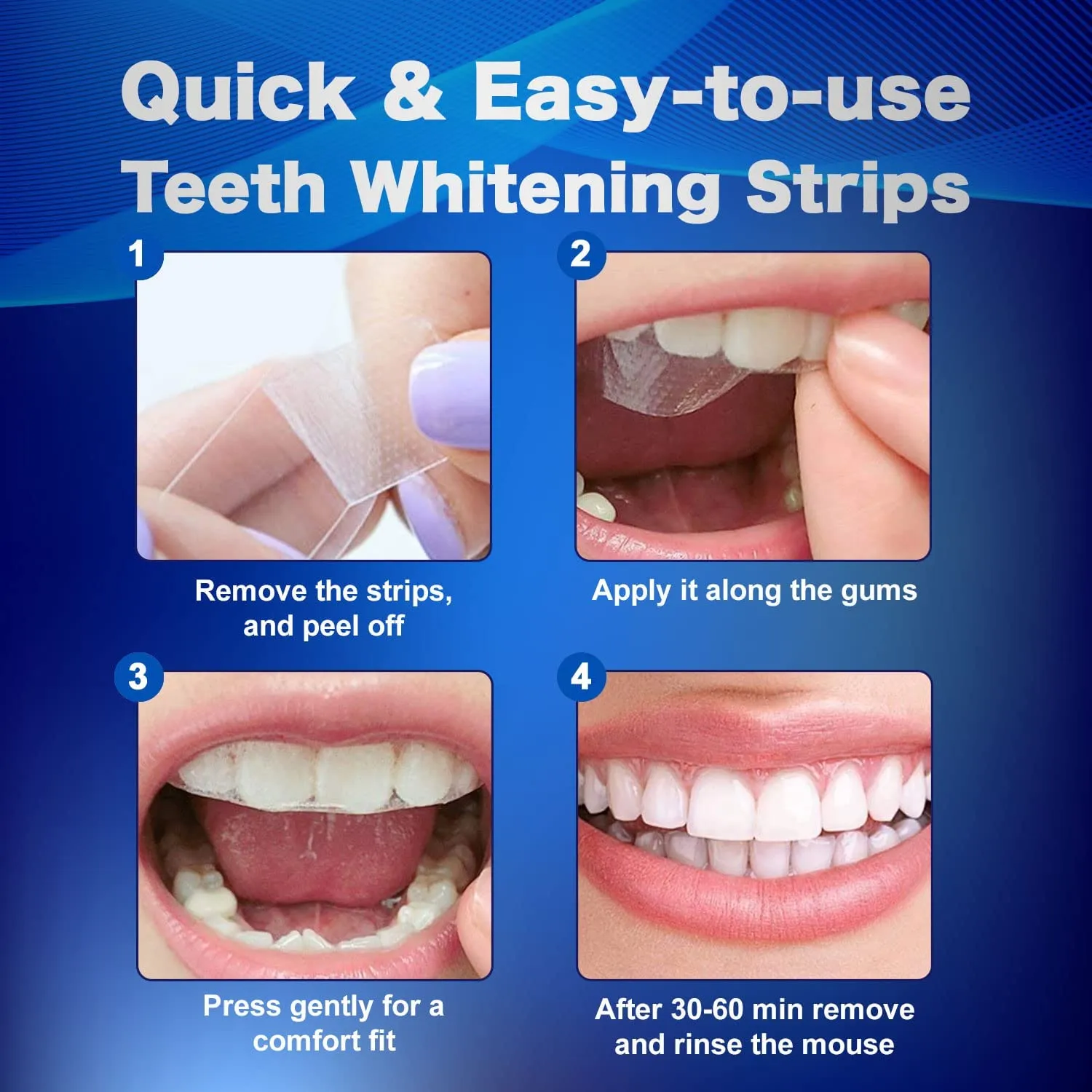
The enamel of our teeth is porous, and over time, stain molecules accumulate within these pores, leading to discoloration. Peroxide-based whitening agents work by releasing oxygen molecules that react with these stain molecules, breaking them down. This process lightens the appearance of the teeth. The concentration of the peroxide, the contact time, and the frequency of application all play a significant role in the whitening outcome. Professional whitening treatments often use higher concentrations of peroxide and can produce more dramatic results. However, the principles remain the same – breaking down stain molecules to reveal a brighter, whiter smile. The efficacy varies on the type of stain and the overall health of the teeth, therefore it is crucial to consult a dentist before starting.
Factors Influencing Whitening Strip Frequency
Several factors influence how often you can safely use whitening strips. The concentration of the active ingredient (usually hydrogen peroxide) is a major consideration. Higher concentrations typically yield faster results but also increase the risk of sensitivity and irritation. Your individual tooth sensitivity is another critical factor. If you have sensitive teeth, you may need to use strips less frequently or opt for lower-concentration products. The type of stains you are trying to remove also matters. Surface stains from coffee or tea may respond well to whitening strips, while deeper, intrinsic stains may require more aggressive treatments. Finally, your overall oral health, including the presence of cavities or gum disease, can impact how often you should use whitening strips.
Tooth Sensitivity and Whitening Strips
Tooth sensitivity is a common side effect of using whitening strips. The peroxide can penetrate the enamel and reach the dentin, which contains nerve endings. This can cause temporary sensitivity, especially to cold or hot temperatures. If you experience sensitivity, it’s important to reduce the frequency of use, use strips for a shorter duration, or switch to a lower-concentration product. Using a toothpaste designed for sensitive teeth, which contains ingredients like potassium nitrate, can also help manage the discomfort. Consult with your dentist if the sensitivity is severe or persistent, as this could indicate an underlying issue or the need for a different approach to teeth whitening.
Gum Irritation and Whitening Strips

Gum irritation is another potential side effect of using whitening strips. If the whitening agent comes into contact with the gums, it can cause inflammation, redness, and soreness. To minimize gum irritation, carefully apply the strips, ensuring they do not overlap the gums. Avoid brushing your teeth immediately before using the strips, as this can irritate the gums. If irritation occurs, stop using the strips until your gums have healed. Consider using a different brand or product, or consult your dentist. In more severe cases, your dentist may recommend alternative whitening methods to prevent further complications.
Types of Whitening Strips
There are two primary categories of whitening strips available to consumers – over-the-counter (OTC) and professional. Each type has its own set of features and recommended usage guidelines. Understanding the differences can help you choose the best option for your needs and oral health profile.
Over-the-Counter Whitening Strips
OTC whitening strips are widely available in drugstores and online. They typically contain lower concentrations of peroxide, making them a safer option for most users. They are designed for home use and come with clear instructions on how often to use them. While OTC strips may take longer to produce noticeable results, they are often a good starting point for those new to teeth whitening or those with sensitive teeth. Always follow the manufacturer’s instructions and be aware of potential side effects. Consistency is key, and achieving desired results may take several weeks of regular use.
Professional Whitening Strips
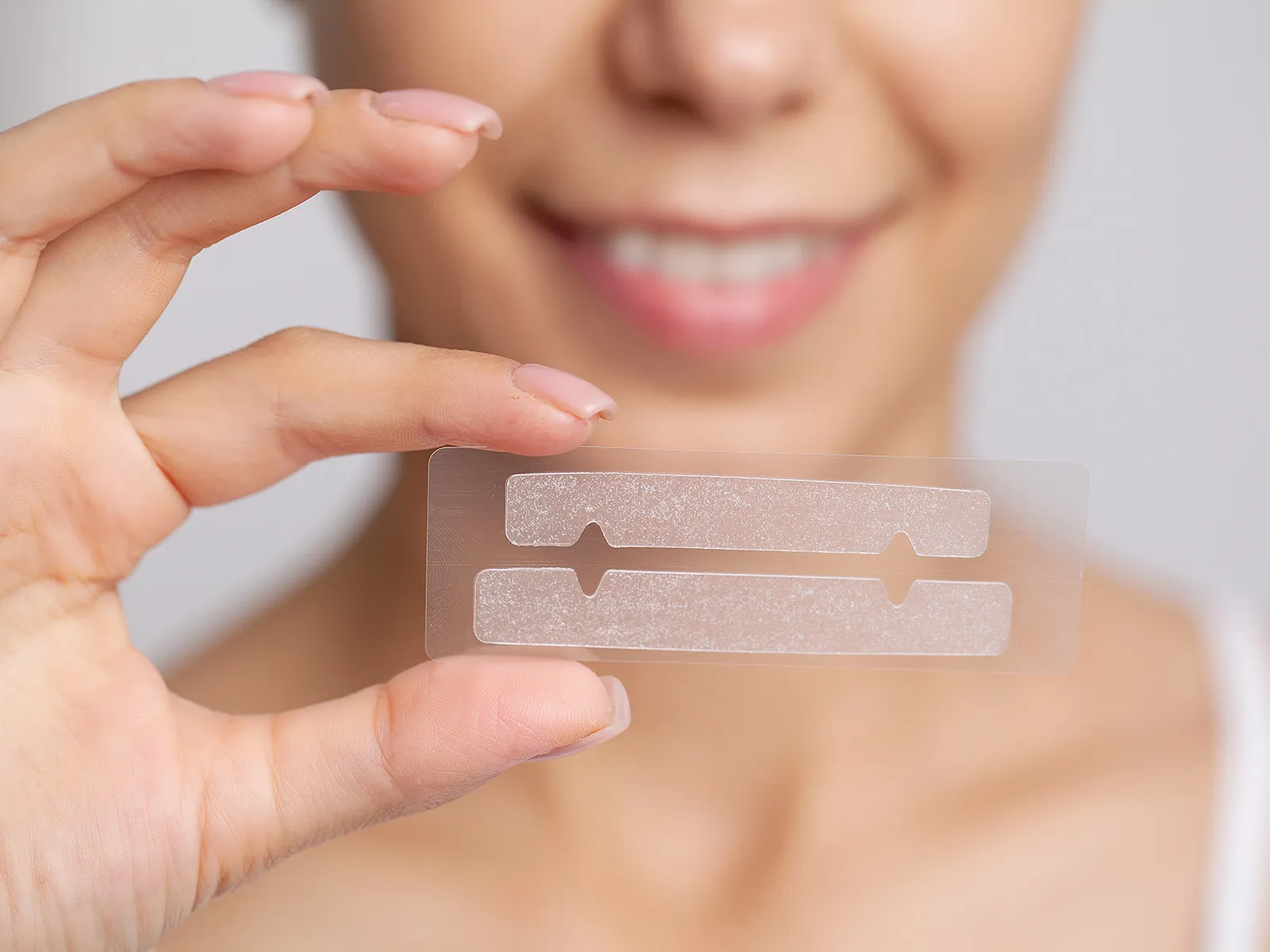
Professional whitening strips are available from your dentist. These strips typically contain a higher concentration of peroxide and are often prescribed for faster and more dramatic whitening results. Before prescribing, your dentist will assess your oral health to ensure that whitening strips are a safe and suitable option. Professional strips come with specific instructions provided by your dentist. Because of the higher concentration of the active ingredient, there is an increased risk of sensitivity and gum irritation. Regular check-ups with your dentist are essential while using professional strips to monitor for any adverse effects.
Recommended Usage Frequency
The recommended usage frequency for whitening strips depends on the product, the concentration of the active ingredient, and your individual oral health. Most OTC strips recommend use once or twice a day for a specific duration, such as 30 minutes. Professional strips, prescribed by a dentist, may have different instructions. It is very important to follow the manufacturer’s instructions on the product packaging. Overusing whitening strips can lead to increased sensitivity, gum irritation, and even damage to the tooth enamel. If you are unsure how often to use a product, consult your dentist. A dental professional can assess your oral health and provide personalized guidance to ensure safe and effective teeth whitening.
General Guidelines for Whitening Strip Use
Here are some general guidelines for using whitening strips safely and effectively. Always read and follow the manufacturer’s instructions carefully. Apply the strips correctly, ensuring they cover the teeth surfaces and avoid contact with the gums. Avoid brushing your teeth immediately before applying the strips. If you experience sensitivity or gum irritation, reduce the frequency of use or discontinue use. Avoid consuming staining foods and drinks, such as coffee, tea, and red wine, during the whitening process. Store the strips in a cool, dry place and away from direct sunlight. And, of course, it’s always a good idea to consult with your dentist before starting any teeth-whitening treatment.
Factors Determining Safe Frequency
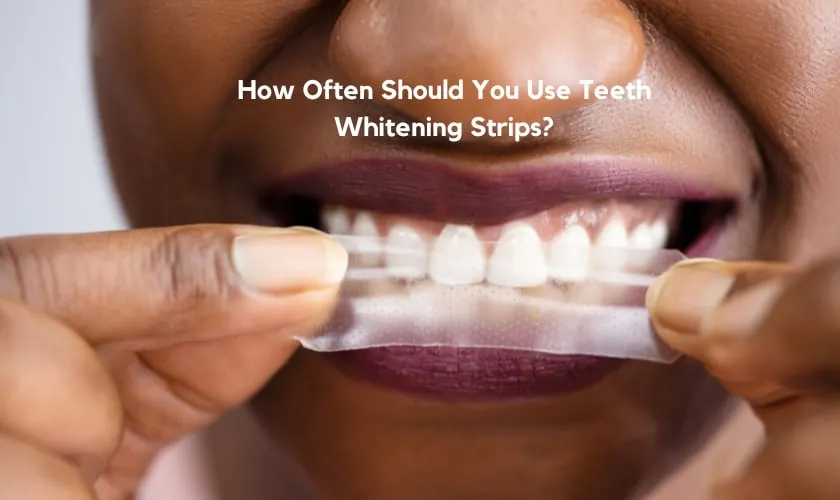
Several factors determine the safe frequency of whitening strip use. These include the concentration of the whitening agent (typically hydrogen peroxide), your tooth sensitivity, the health of your gums, and the type of stains you are trying to remove. People with sensitive teeth should use lower-concentration products or reduce the frequency of application. If you have gum disease or other oral health issues, it is very important to consult your dentist before using whitening strips. The duration of use should also be considered; longer application times increase the risk of side effects. It is always better to start with a conservative approach and increase frequency or duration gradually, if needed, while monitoring for any adverse reactions. A dentist can provide the best recommendation.
Maximizing Whitening Strip Effectiveness
To maximize the effectiveness of whitening strips, start by choosing a product that aligns with your needs and oral health. Consider the concentration of the whitening agent and the recommended application duration. Make sure to brush and floss your teeth before applying the strips to remove any plaque or debris that may interfere with the whitening process. Avoid eating or drinking anything other than water while the strips are in place. Follow the instructions carefully and do not exceed the recommended usage frequency. Be patient, as it may take several weeks to achieve the desired results. If you are not seeing the results you want, talk to your dentist about other teeth whitening options.
Tips for Best Results
Here are a few tips to help you get the best results from whitening strips. Before starting, consult your dentist to rule out any underlying dental issues that might affect whitening. Choose a product with a concentration and application schedule that suits your sensitivity level. Apply the strips correctly, ensuring they cover all tooth surfaces. Avoid staining foods and drinks during treatment. Maintain good oral hygiene, including regular brushing and flossing. Take before-and-after photos to track your progress. Be consistent with the treatment, following the product instructions carefully. And, finally, be patient, as it may take a few weeks to see the desired results.
Potential Risks and Side Effects
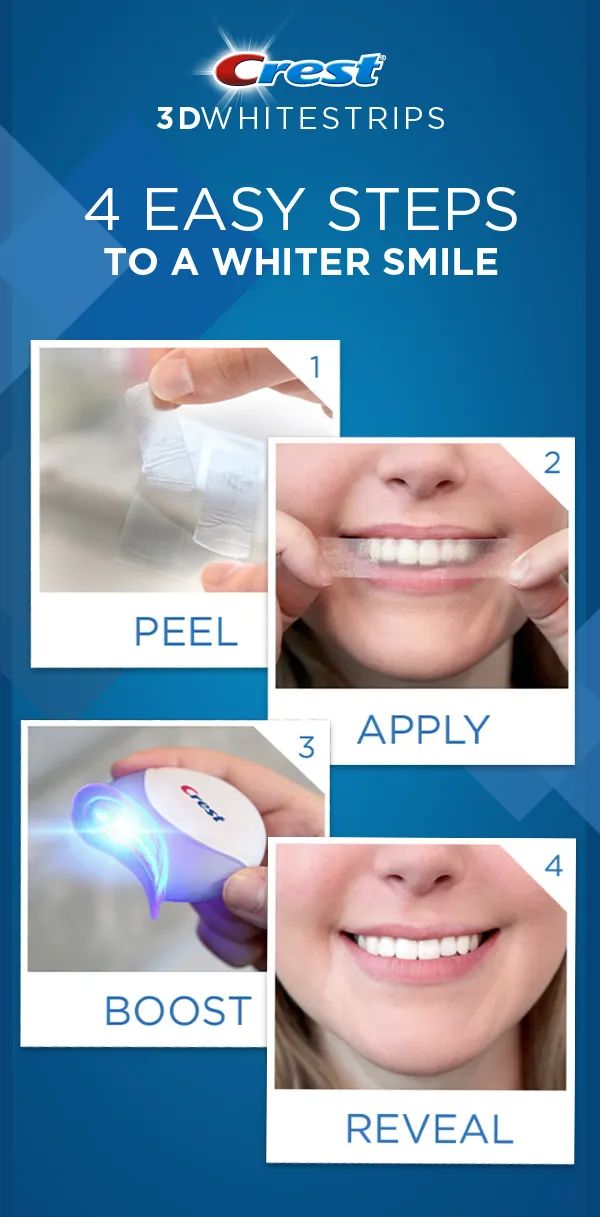
Whitening strips are generally safe when used as directed, but there are potential risks and side effects. The most common side effects are tooth sensitivity and gum irritation. Sensitivity can range from mild discomfort to sharp pain when exposed to hot or cold temperatures. Gum irritation can manifest as redness, swelling, and soreness. In rare cases, overuse of whitening strips can lead to enamel erosion, making teeth more susceptible to decay. Other potential risks include allergic reactions to the whitening agent or other ingredients in the strips. It is crucial to follow the instructions carefully and to stop using the product if you experience severe side effects. Consult your dentist if you have any concerns.
Managing Sensitivity
If you experience tooth sensitivity while using whitening strips, there are several steps you can take to manage it. Reduce the frequency of use or switch to a lower-concentration product. Use the strips for a shorter duration. Brush your teeth with a toothpaste designed for sensitive teeth, which contains ingredients like potassium nitrate. Avoid consuming very hot or cold foods and drinks. Take over-the-counter pain relievers, such as ibuprofen, to alleviate discomfort. If the sensitivity persists or worsens, consult your dentist. They may recommend a different teeth-whitening method or suggest a fluoride treatment to strengthen your enamel.
Dealing with Gum Irritation
If you experience gum irritation from whitening strips, it’s very important to take immediate steps to address the issue. Stop using the strips until your gums have healed. Gently brush your teeth and gums with a soft-bristled toothbrush. Rinse your mouth with a warm saltwater solution to soothe the irritated tissues. Avoid using harsh mouthwashes. Consider using a toothpaste formulated for sensitive gums. Make sure the strips are not overlapping your gums during application. If the irritation is severe or persistent, consult your dentist. They may recommend a different whitening method or provide treatment to reduce inflammation.
Alternatives to Whitening Strips
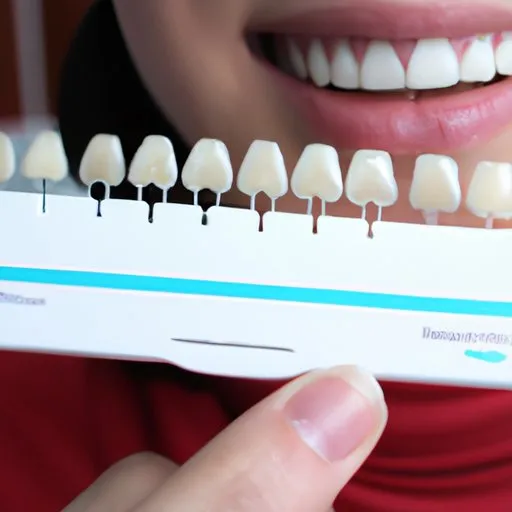
If whitening strips are not the right choice for you, several alternative teeth-whitening options are available. Whitening toothpastes contain mild abrasives or chemicals to remove surface stains. Whitening mouthwashes help maintain a brighter smile. At-home whitening kits with custom trays and a whitening gel provide more control over the process. Professional teeth-whitening treatments, such as in-office bleaching, offer the most dramatic results. The choice of the best alternative depends on your needs, preferences, and oral health. Consult your dentist to determine which option is best suited for you. They can assess your teeth and recommend the most effective and safest method.
Professional Teeth Whitening Options
Professional teeth whitening, performed by a dentist, offers the most effective and dramatic results. In-office bleaching involves applying a high-concentration whitening gel to the teeth and using a special light or laser to activate the gel. This process is done under careful supervision, which reduces the risk of side effects. Professional whitening can remove both surface stains and deeper, intrinsic stains. Your dentist can also create custom-fit trays for at-home whitening with a professional-strength gel. Professional treatments are often the best choice for those seeking quick and significant results or for those with severe staining. Consult with your dentist to determine the best course of action for your situation and ensure that it is a safe procedure.
At-Home Whitening Alternatives
Several at-home teeth-whitening alternatives are available for those who prefer to whiten their teeth at home. Whitening toothpastes contain mild abrasives that gently remove surface stains. Whitening mouthwashes can help maintain a brighter smile. Over-the-counter whitening gels and trays offer a convenient way to whiten your teeth. These products typically contain a lower concentration of peroxide than professional treatments, which makes them safer for home use. It’s crucial to read and follow the product instructions carefully. Results may vary depending on the product, the type of stains, and the individual’s oral health. Consult with your dentist for recommendations on the most suitable at-home whitening options for your needs.
Maintaining Your White Smile
Maintaining your white smile after teeth whitening requires a consistent commitment to oral hygiene and lifestyle choices. Regular brushing and flossing are essential for removing plaque and preventing stains. Use a whitening toothpaste to help maintain brightness. Consider using a whitening mouthwash to further remove surface stains. Limit your consumption of staining foods and drinks, such as coffee, tea, red wine, and tobacco products. Schedule regular dental check-ups and cleanings to remove any accumulated stains. Consider touch-up treatments with whitening strips or other methods as needed. Following these guidelines will help you enjoy your bright, white smile for a long time.
Oral Hygiene Practices
Good oral hygiene is crucial for maintaining a healthy and bright smile. Brush your teeth at least twice a day for two minutes each time, using a fluoride toothpaste. Floss daily to remove plaque and food particles from between your teeth. Use an antimicrobial mouthwash to reduce bacteria in your mouth. Consider using an electric toothbrush for more effective plaque removal. Clean your tongue with a tongue scraper or toothbrush to remove bacteria and prevent bad breath. Visit your dentist for regular check-ups and professional cleanings. Following these practices will help you prevent stains and maintain a healthy, white smile.
Dietary Considerations
Your diet can significantly impact the color of your teeth. Certain foods and drinks are known to stain teeth, while others can help keep them white. Limit your consumption of staining foods and drinks, such as coffee, tea, red wine, berries, and dark sauces. Avoid tobacco products. Consume teeth-friendly foods such as apples, celery, and carrots, which can help clean your teeth naturally. Drink plenty of water throughout the day to rinse away food particles and keep your mouth hydrated. Consider incorporating foods rich in calcium and vitamin D to promote strong teeth and healthy enamel. By making smart dietary choices, you can help maintain a bright, white smile.
